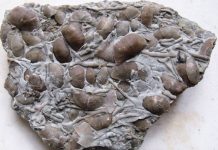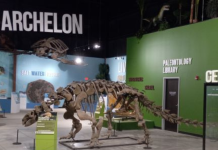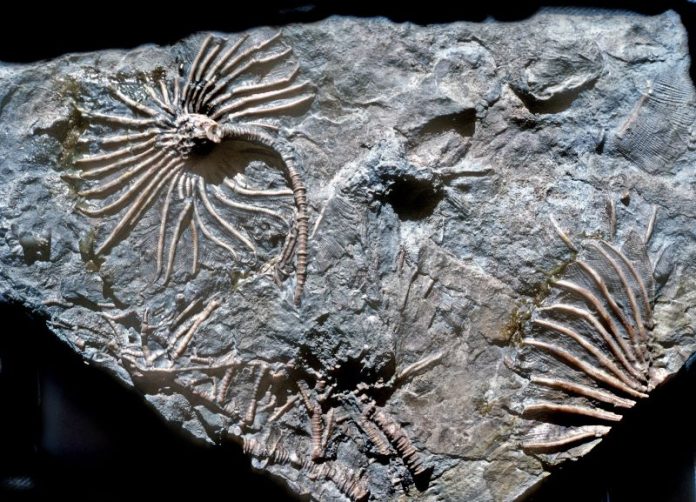
Echinoderms are interesting to the fossil collector as there are more identified fossil (extinct) species than living (extant) species. Both the 6,500 plus living species and the 14,000 plus fossil species are marine. Fossil echinoderms give clues to the ancient past including the depth and conditions where they lived. Echinoderms are more closely related to the higher forms of life than any of the other invertebrates.
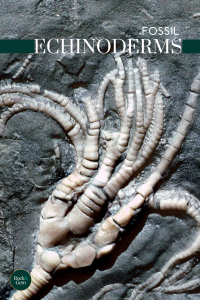
About Echinoderms
This group of marine animals includes sea lilies (Crinoidea), blastoids, cystoids, starfish (Asteroidea), brittle stars (Ophiuroidea), sea urchins and sand dollars (Echinoidea) and sea cucumbers (Holothuroidea).
Echinoderms are found as fossils as far back as 540 million years, the most common being crinoids and blastoids. Echinoderms are conducive to forming fossils because their body consists of a series of interlocking calcareous (CaCo3) plates usually with five-point symmetry. This is readily seen in the interlocking discs that make up the stem of crinoids. These discs frequently get separated after the animal dies and they fossilize as individual circles.
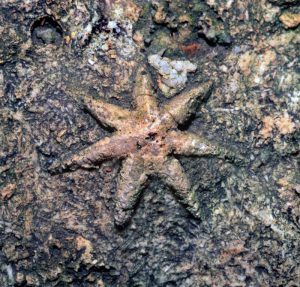
State Fossils
While dinosaurs draw attention when naming a state fossil, Missouri has tapped an echinoderm for the top fossil spot picking the sea lily, Delocrinus missouriensis.
Although Iowa does not have a top fossil, the crinoid was nominated in the past because these creatures make up a significant portion of the state’s limestone deposits. A 2018 resolution says there are significant crinoid deposits in the Iowa cities of Burlington, Le Grand and Gilmore City and states that Burlington has been called the “crinoid capital of the world” by paleontologists.
There have also been proposals to name the sea biscuit as the state fossil of Florida.
This story about echinoderms previously appeared in Rock & Gem magazine. Click here to subscribe. Story by Richard Gross and Pam Freeman.



